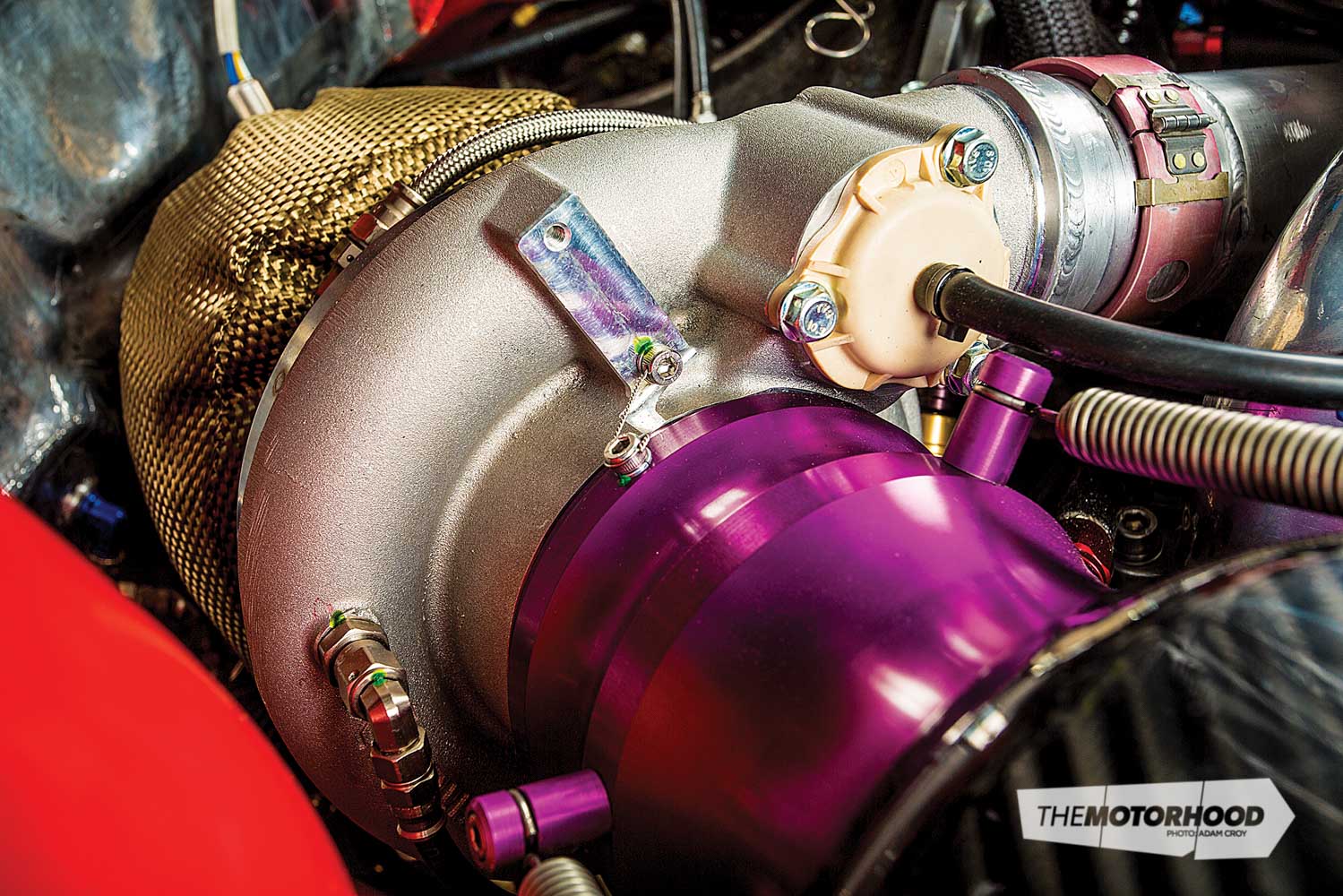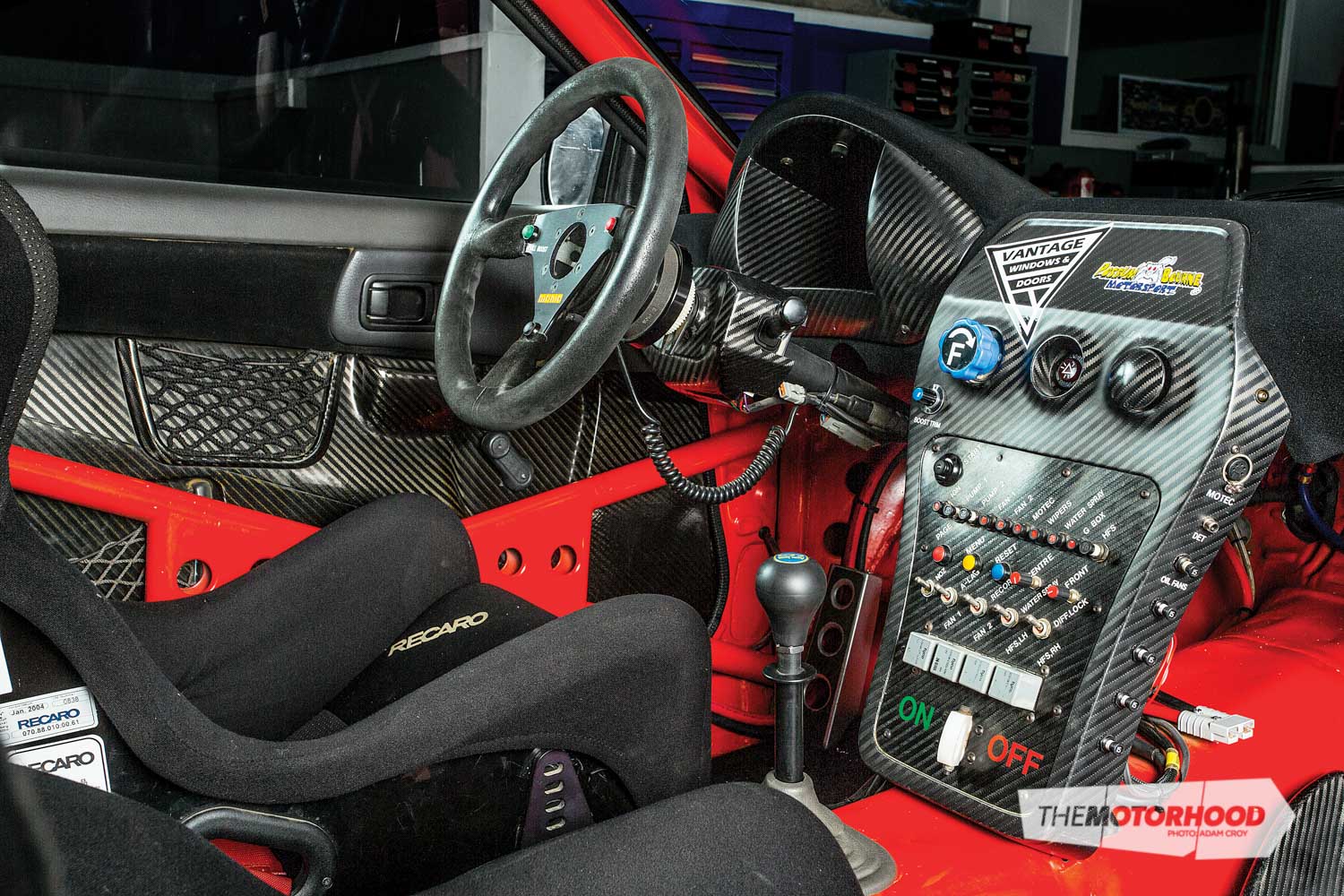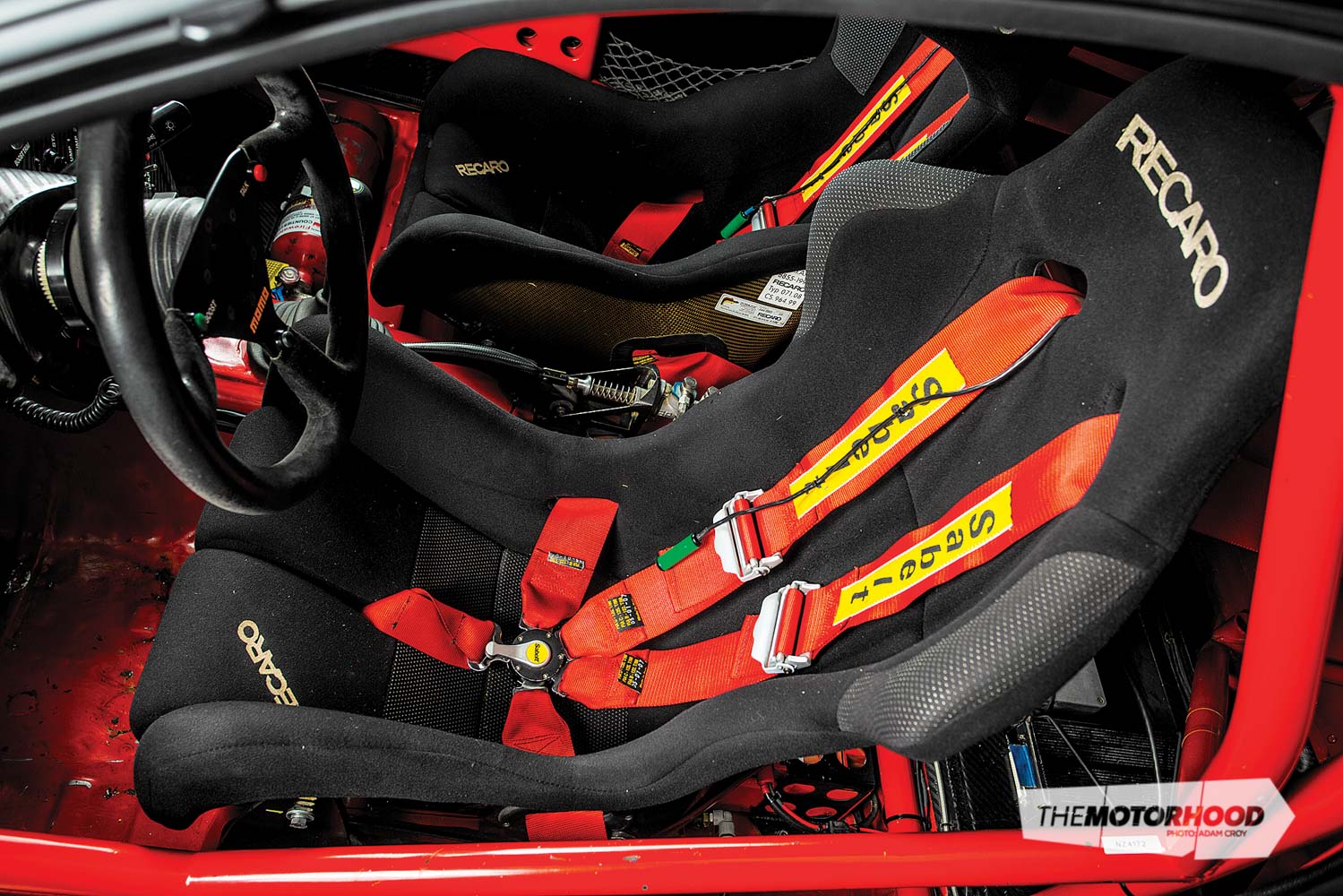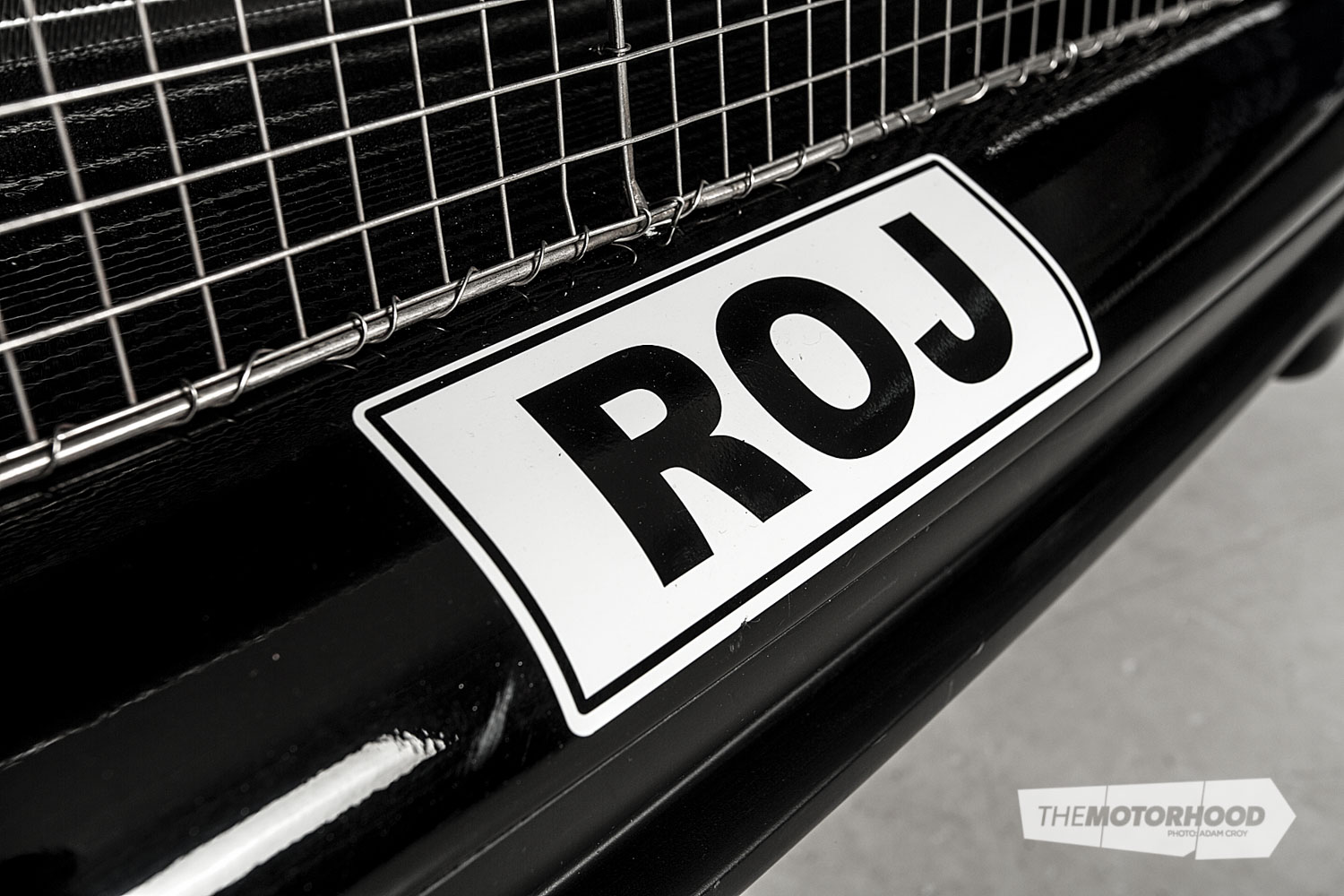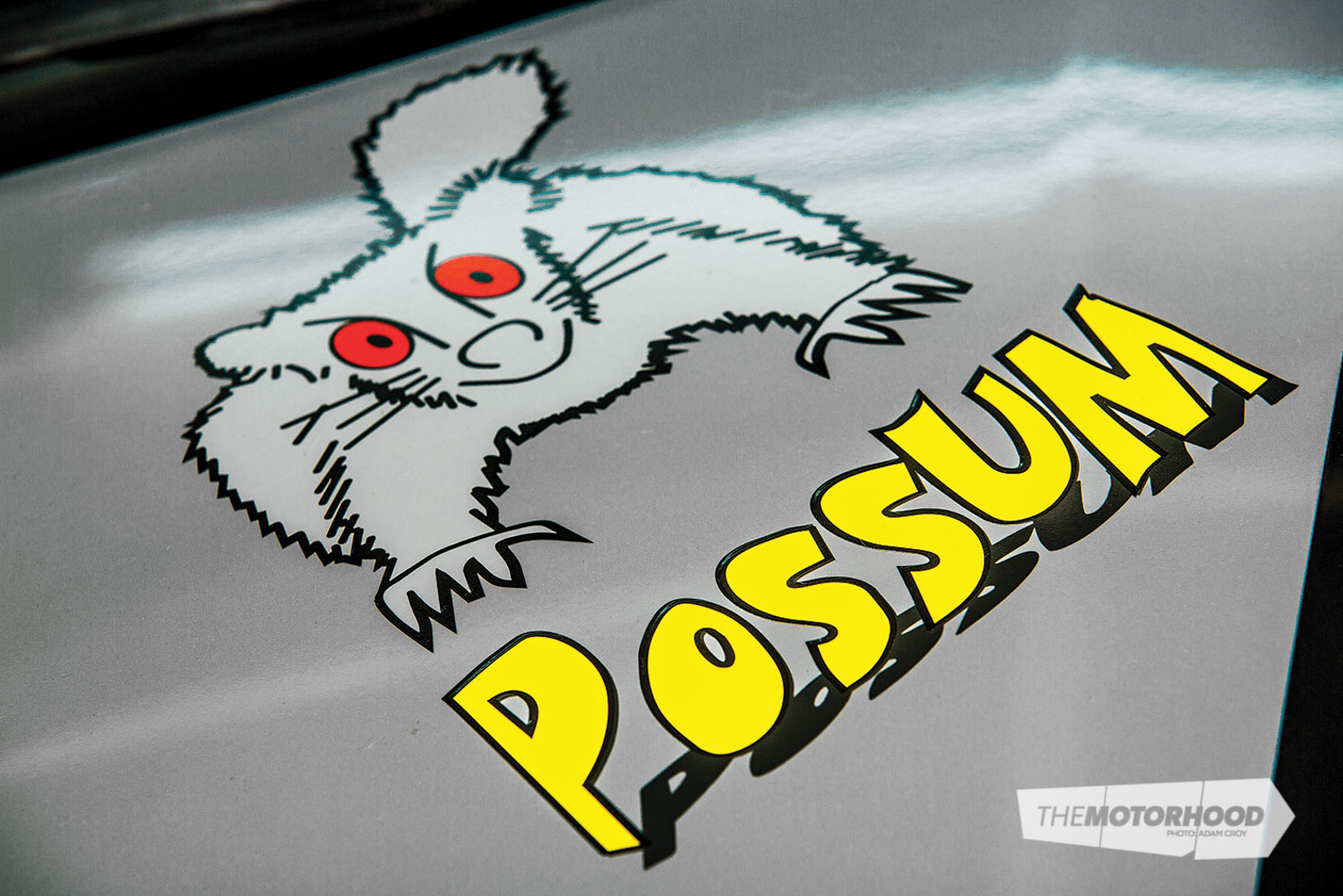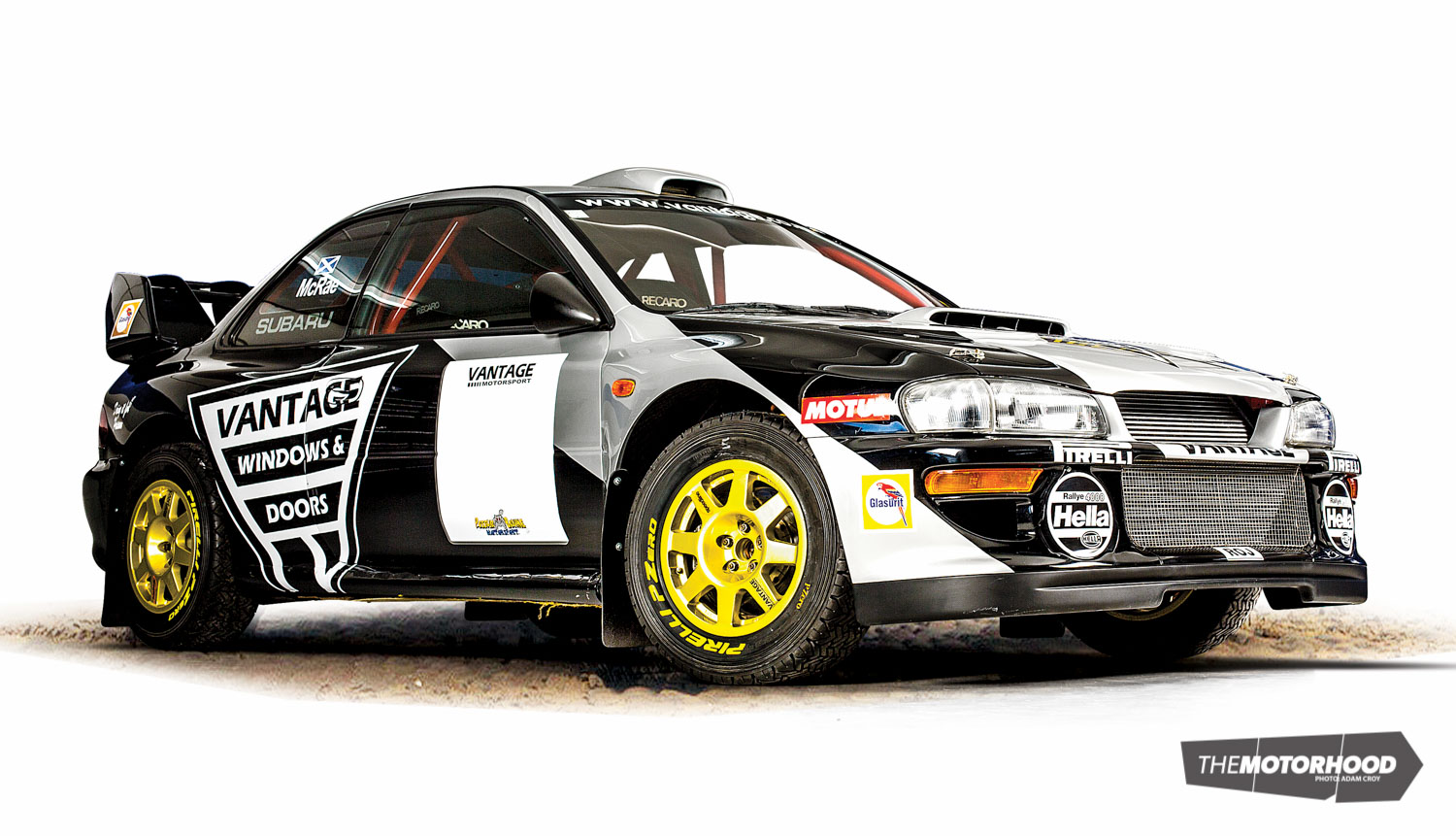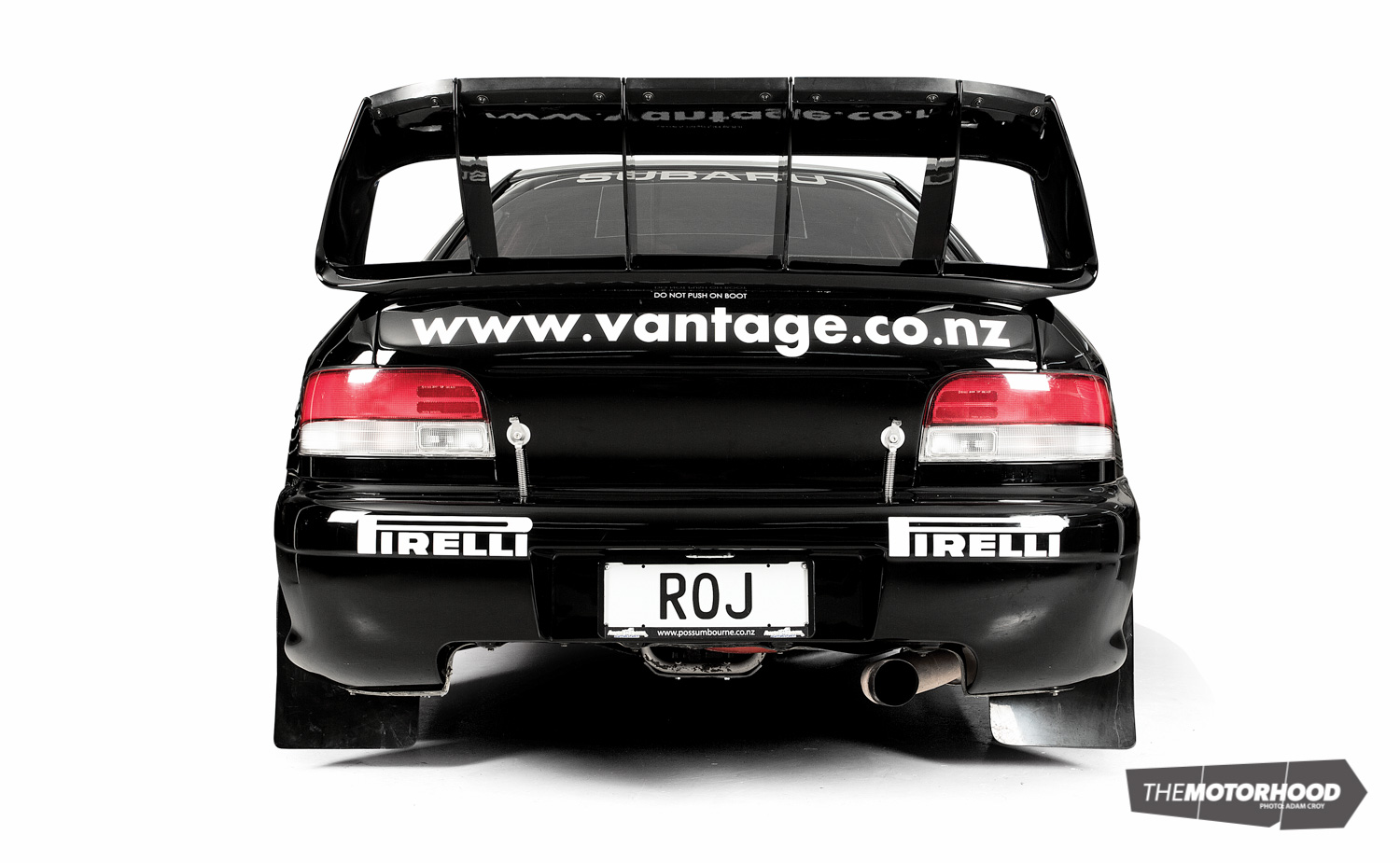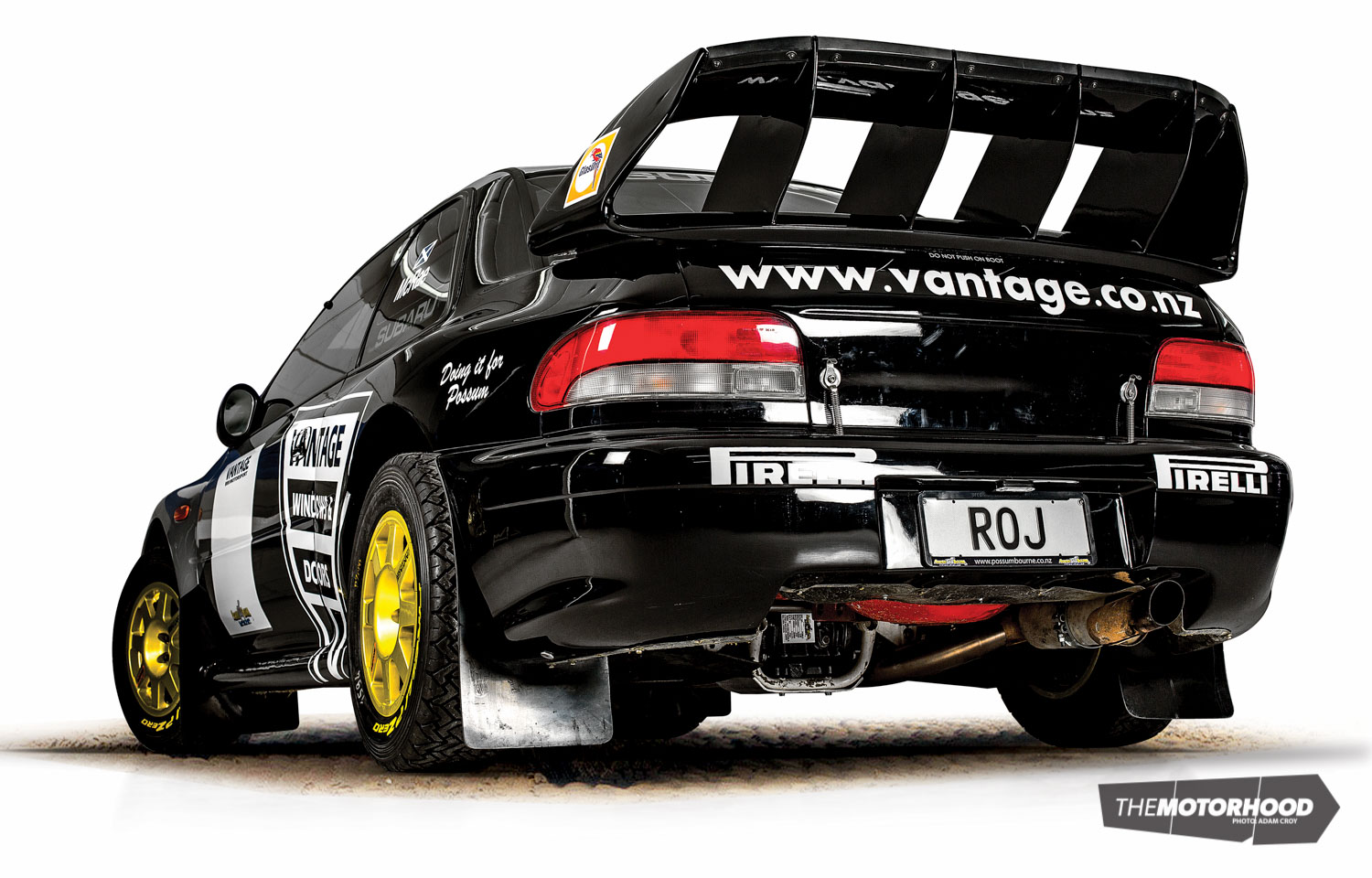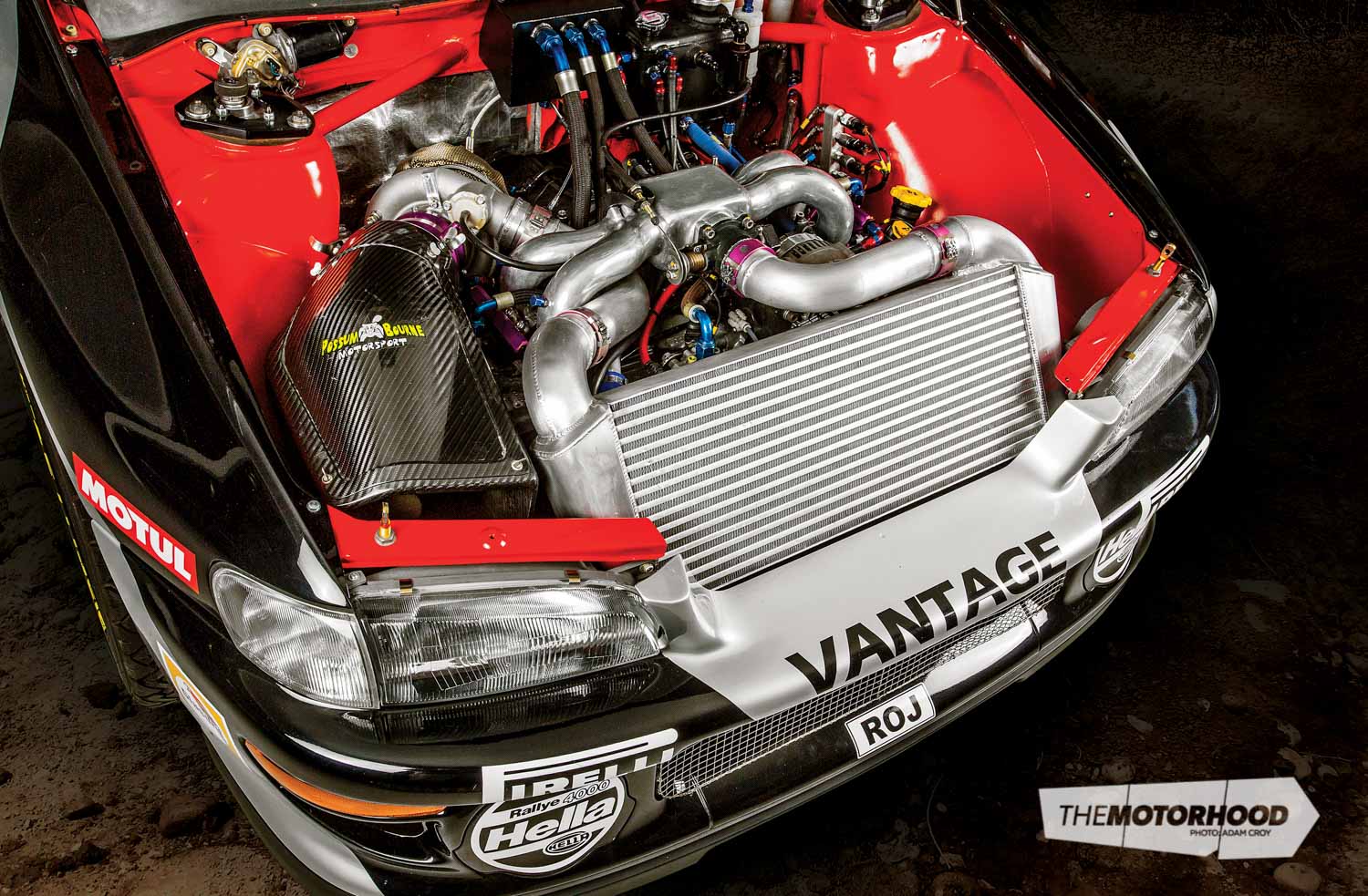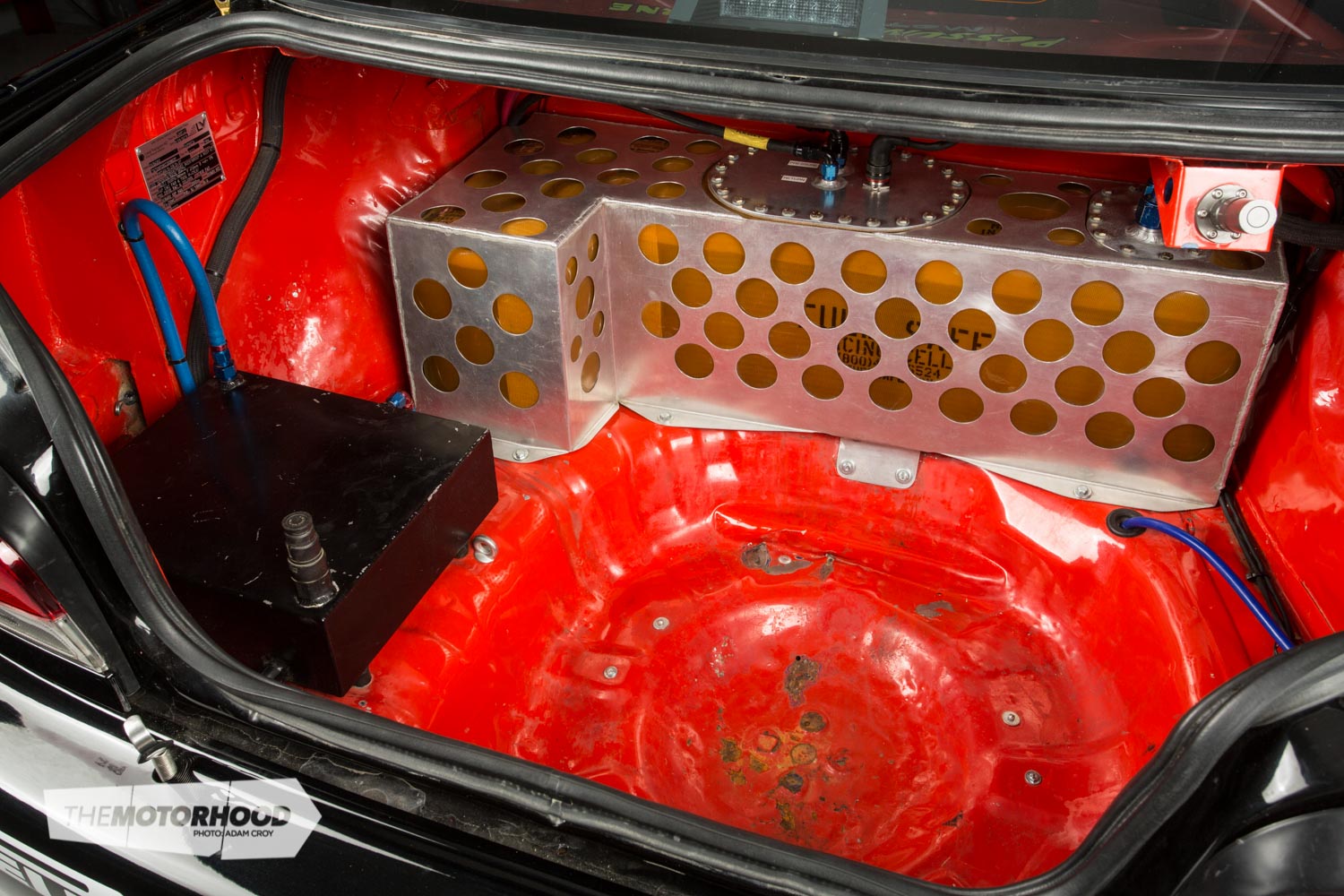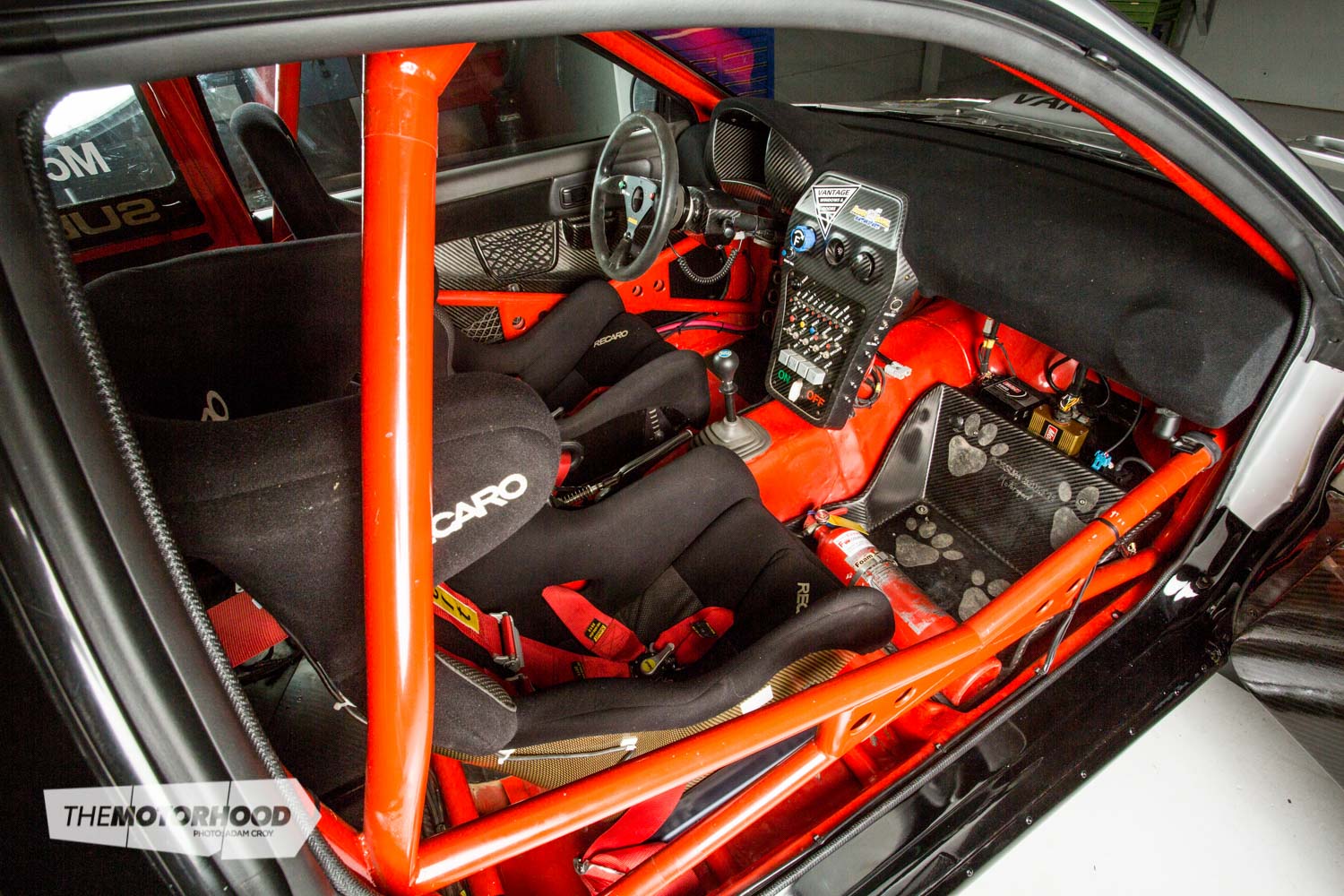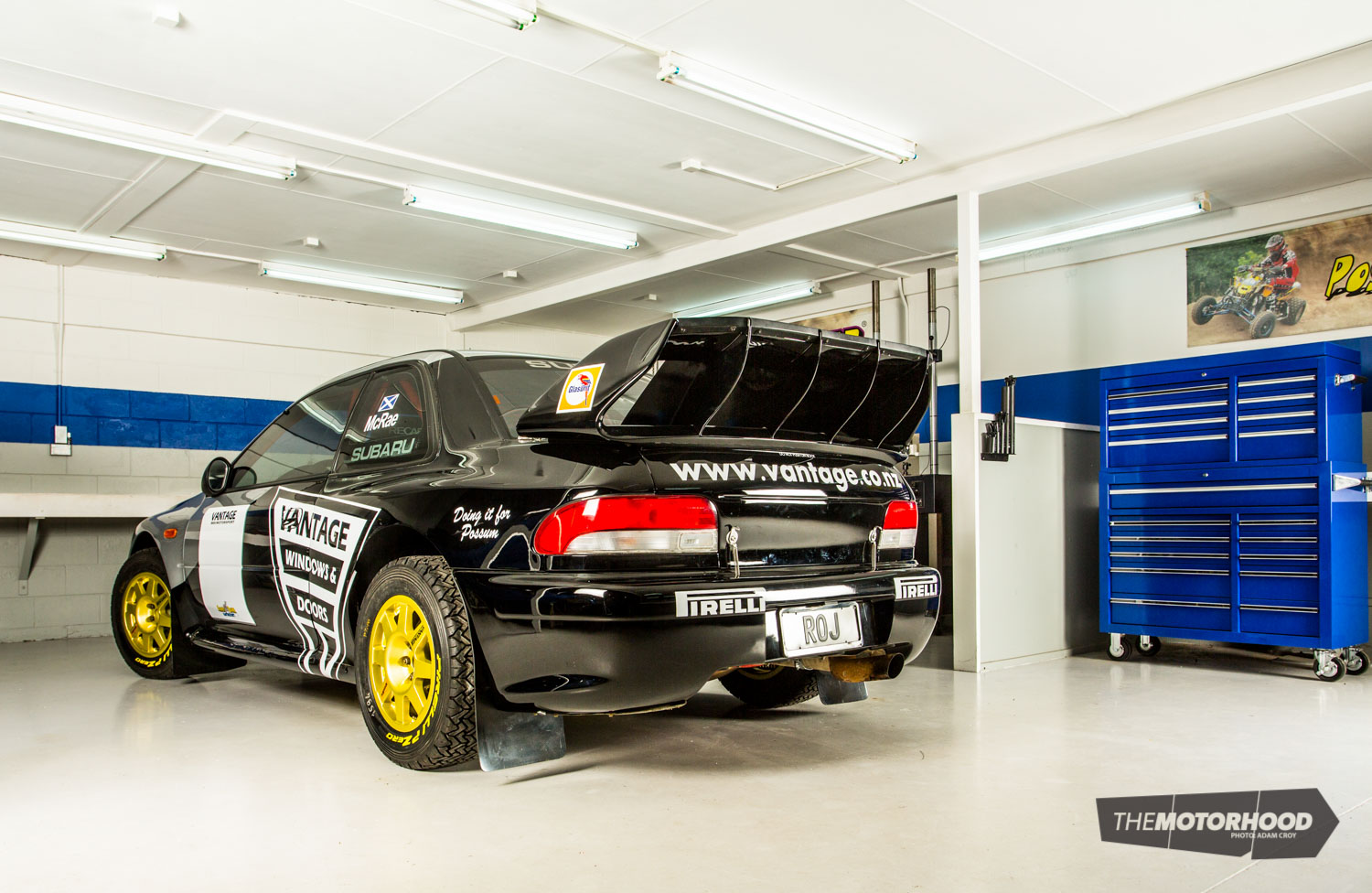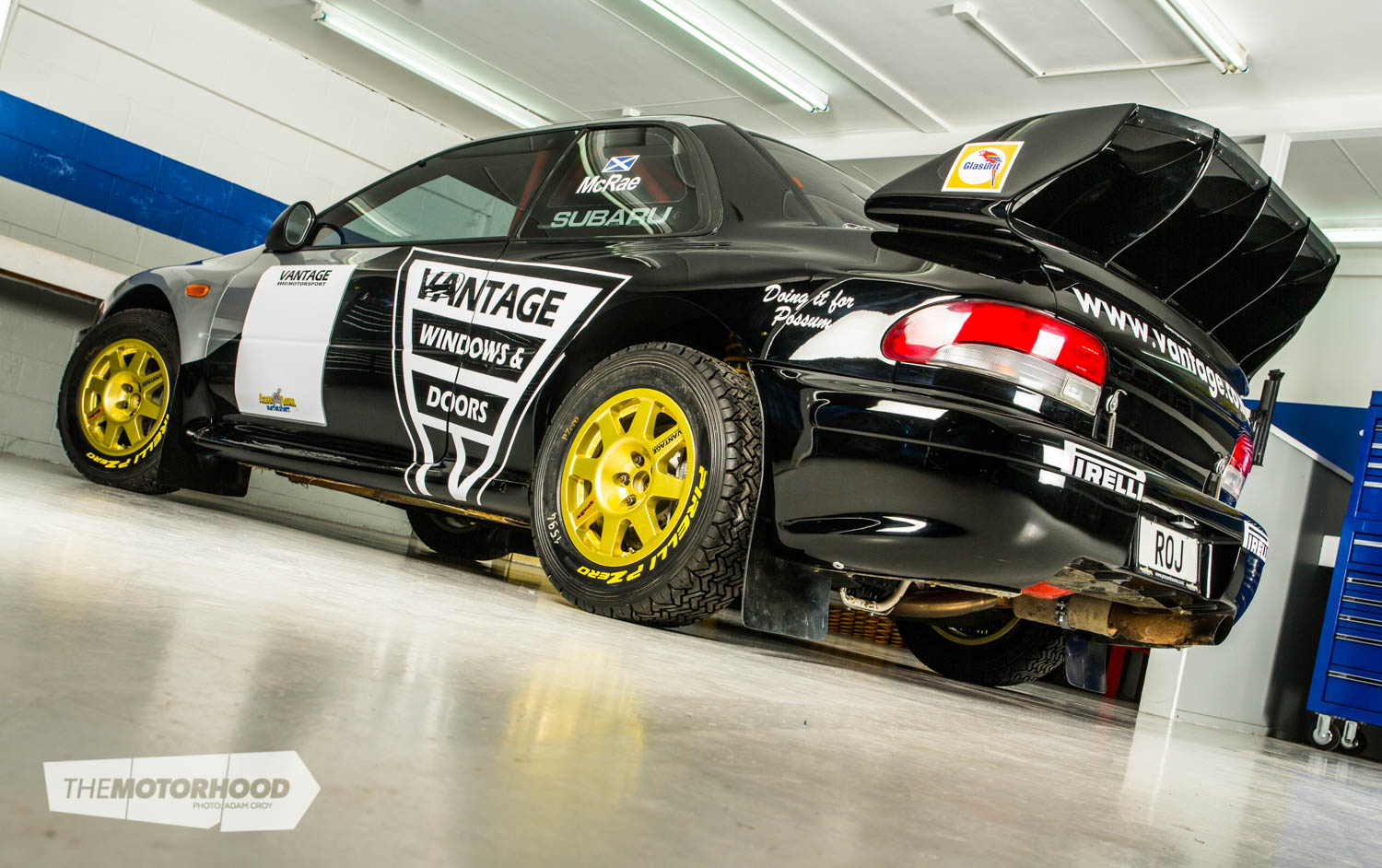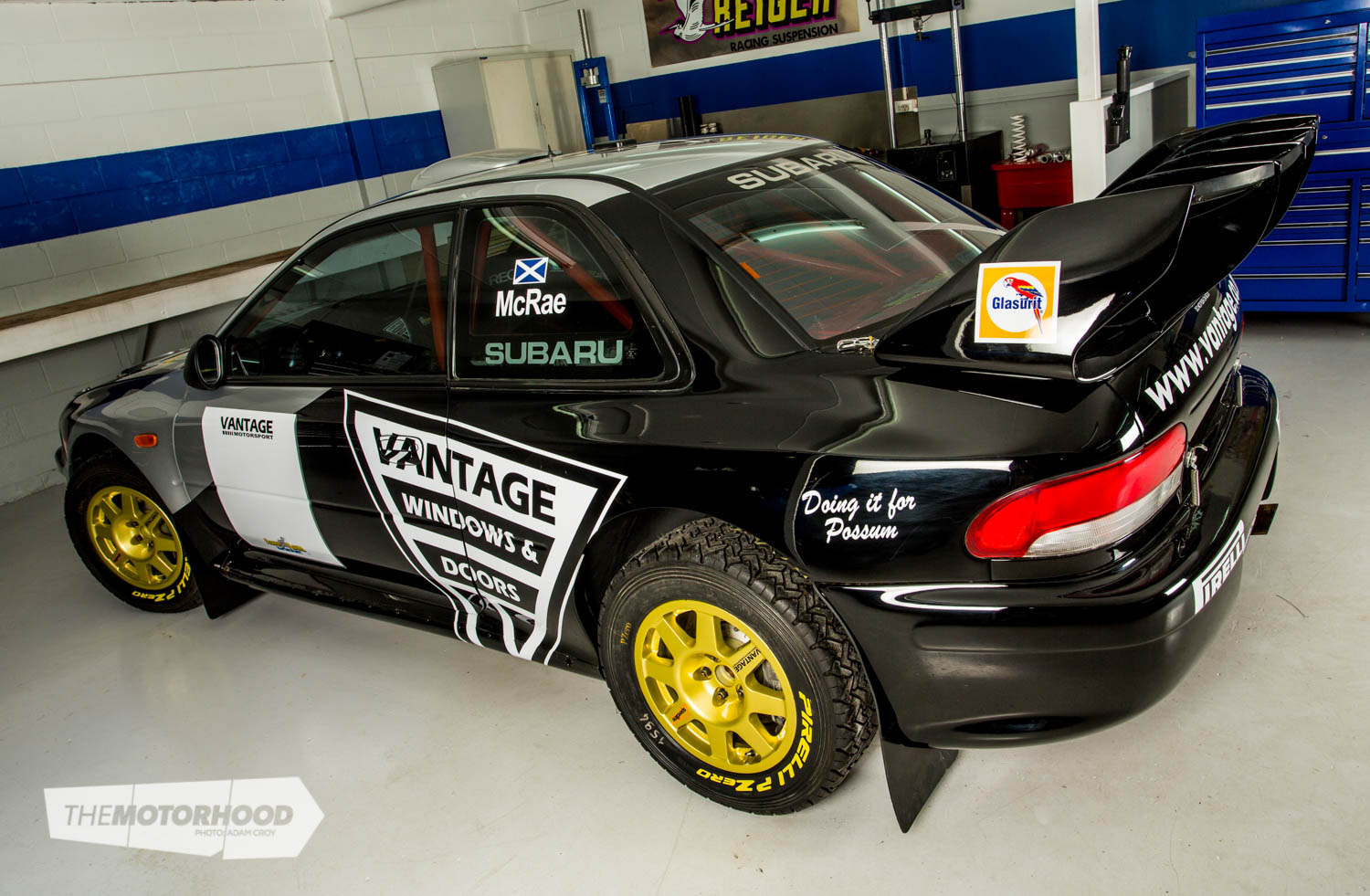data-animation-override>
“The legacy lives on as Possum Bourne Motorsport has rebuilt and restored Possum’s old WRC Impreza to keep up with, and surpass, the best Repco’s Race to the Sky has to offer”

When you’re trusted to rebuild a car you’ve been around since its heyday, and you’re given free rein on the project’s final output and public perception, which direction do you take it? For Possum Bourne Motorsport (PBMS) owner and composite engineer Bryan Hayton, the decision was easy — the WRC-spec Subaru Impreza would stay period correct, but with some much-needed power and reliability improvements.

Originally built in 1998 by Prodrive, the WRC-spec Impreza was campaigned by Finn rally driver Juha Kangas, who crashed it during Rally New Zealand. The car was then purchased by Possum Bourne, who already had a WRC Impreza in competition, and decided to rebuild the crashed coupe to contest the 2001 Race to the Sky in Cardrona Valley.
There was nothing quite like the rebuilt WRC car contesting the mountain at the time — with around 447kW (600hp), Bourne won the event on his first outing. However, 2002 wasn’t as successful — a blown tyre cost the race.

After Possum’s passing in 2003, the Subaru was purchased by Vantage Doors and Windows (Vantage Motorsport) and used to contest Race to the Sky until 2007, driven by WRC driver Kenneth Eriksson, but it fell short of first place every year thanks to Nobuhiro ‘Monster’ Tajima’s mighty Escudo. Since Race to the Sky’s absence, the Subaru has been used for special events such as Rod Millen’s Leadfoot Festival in 2011 and 2012, driven by Emma Gilmour, and at the Possum Bourne Memorial Rally in 2013, driven by Cody Crocker. So when the Repco Race to the Sky event was announced for 2015, Craig Vincent from Vantage swung into action, enlisting the PBMS team to do their thing and give the Subaru what it needed to return to the hill climb with a vengeance.

To be competitive, the team knew more power would be needed, but with a six-month deadline to combat Monster’s hill-climb–specific ‘Super 86’, head engineer Paul Hayton started full time on the project, and out came the drawing board. The team discussed issues they previously had with the Subaru when contesting Race to the Sky — the first being a lack of power, but the main issue in the past had been cooling, as Paul explained. “For the last three or four years, we’ve had overheating problems. Because of how the intercooler and radiator had been positioned, the radiator wasn’t getting enough air to remain efficient.”

For the Subaru’s most recent outing, the team cut large vents into the bonnet, and designed a big air dam on the front bar to help address cooling issues, but for Race to the Sky this could not be done, as Bryan decided the WRC-spec Subaru would retain the period-correct 2000-spec bumpers and bonnet.
“The problem we had initially was that the car had to look the same as it did in 2000. By making this decision, we couldn’t cut any of the car up, so we had to figure out a way to fit the large radiator and intercooler in there and make it work,” Bryan said, adding, “This was probably one of the biggest challenges of the build.”
To combat this, the team designed a very clever V-mounted intercooler and radiator set-up which, along with a combination of air ducts designed in-house, works extremely well. With WRC oil coolers for both the gearbox and the engine installed ahead of each front wheel, ducting also had to be designed behind the 2000-spec bumper to channel air in the right direction.

With cooling under control, PBMS engine builder Glen Cox started building the PBMS-spec EJ20. “We decided to retain the factory engine capacity to help retain the period-correct theme we were going for throughout the rebuild,” Bryan explained. With a workshop full of WRC spares from the good old days, a Group A crankshaft was chosen, WRC engine bearings, and a bunch of PBMS-spec goodies such as the Argo PBMS-spec con rods, PBMS-spec JE pistons, PBMS 14mm head studs, PBMS-spec cams, and big-port cylinder heads — all bolted to, and inside, the PBMS ‘extreme power’ 2.0-litre block.
With a block now capable of handling their initial power goal, the team decided to make the switch from the Garrett turbo they previously ran, to a BorgWarner EFR 8374. The turbo sits up high on an easily removed slip-joint manifold, and boost control is taken care of with a TiAL 46mm external wastegate.
“Another huge improvement we have made for both power and cooling is the use of Ethanol E85,” Paul told us. Not only is E85 cheaper than the old C16, it helps maintain cooler combustion temperatures — which the EJ20 desperately needed. “We upgraded the fuel system while we were at it, with new Bosch fuel pumps and Injector Dynamics ID2000 injectors to handle the E85,” Bryan explained.
Once the PBMS team sorted out the fueling gremlins which slowed progress significantly in the final week of preparation (due to a restrictive fuel filter), the Subaru was tuned on the dyno with the MoTeC M880 ECU. The team were delighted to see their efforts pay off when the Subaru churned out 636kW (854hp) at the engine on 42psi of boost — 75kW more than the initial goal.

Back in 1998 when Prodrive initially built the Subaru, they definitely got the chassis, driveline, and suspension package right, as none of these areas needed upgrading before Race to the Sky 2015. The Prodrive Hewland WRC six-speed dog box is said to be the weakest link at the moment, which considering it was developed for a car outputting 220kW (300hp) originally is fairly impressive — mind you, you’d hope so for $90,000 back in 2000.
As the 2015 Repco Race to the Sky kicked off the Impreza and pilot Alistair McRae — younger brother to the late Colin McRae — looked difficult to back for outright honours, especially considering the competitiveness of Australian Brett Hayward and his Suzuki-powered RTTS Special. And things got worse on the morning of the final day of competition, when the team were forced to make an extremely quick engine-change after dramas in practice. But these dramas paled in comparison to what relegated Monster Tajima to the sidelines — his rally over after a spectacular crash caused by a loss of downforce after the rear cover of his Super 86 parted company with the rest of the car at high speed.
With one of his main competitors out of contention, McRae gave the almighty Impreza one big final push, clocking in an impressive 8min 17.616s lap time — enough to take down Hayward, and the determined Ian Ffitch and his illustrious quad bike, to land himself and the Impreza back on the top step of the Cardrona podium. “I know what Possum means to the motorsport community here so to do that in his car, for Craig to invite me down here, it’s been a great weekend,” said a jubilant McRae.
What Possum Bourne Motorsport have achieved in such a short time is astonishing — to have a vehicle performing like a modern hill-climb supercar and appearing as if it rolled out of the Prodrive factory in 2000 really is admirable. It’s the kind of achievement that Possum would have been immensely proud of. And we’re sure he is.
1998 Subaru Impreza (Prodrive WRC)
Engine
- Model: Subaru EJ20, 2000cc flat fourBLOCK: Group A crankshaft, Argo PBMS-spec I-beam connecting rods, PBMS-spec JE pistons, WRC engine bearings, PBMS 14mm head studs, PBMS extreme power 2.0-litre gas ring block, PBMS oil gallery modification
- Head: PBMS-spec cam, PBMS big-port cylinder heads, Ferrera oversized stainless-steel inlet valves, Inconel exhaust valves, hardened shimless buckets, O-ringed head sealing surface, WRC camshaft pulley
- Intake: PBMS carbon-fibre cold-air box, front-facing intake manifold, PBMS/APL billet turbo intake
- Turbo: BorgWarner EFR 8374 dual ceramic ball-bearing turbo
- Wastegate: 46mm TiAL
- Fuel: Two Bosch 044 fuel pumps, Injector Dynamics ID2000 injectors, PBMS fuel rails, Aeromotive fuel pressure regulator, Fuel Safe 75-litre fuel cell bag with internal surge tank, two low-pressure lift pumps
- Ignition: Factory Subaru coil-on-plug ignition
- Exhaust: PBMS three-inch stainless steel mandrel-bent exhaust system
- Cooling: PBMS intercooler piping with Adel Wiggins clamps, PWR lightweight intercooler core with custom PBMS end tanks, WRC transmission cooler, WRC engine cooler, alloy radiator V-mounted with intercooler
- ECU: MoTeC M880, MoTeC E888 expander module, MoTeC ADL dash logger, Gems datalogger, Prodrive WRC transmission ECU, MAC boost solenoid
- Other: Mil-Spec wiring harness, WRC baffled and winged sump
Driveline
- Gearbox: Prodrive Hewland WRC six-speed H-pattern dog box
- Cluch: AP triple-plate carbon clutch
- Flywheel: PBMS flywheel
- Diff: Prodrive Hewland WRC rear diff with LSD, active front differential, active/locked centre differential
- Other: WRC gearbox crossmember, WRC driveshaft
Support
- Struts: Reiger three-way adjustable coilovers
- Springs: PBMS spec King Springs
- Brakes: (F) 304x28mm AP rotors, WRC AP four-pot calipers (R) 304x25mm AP rotors, AP four-pot calipers
- Other: WRC titanium sway bars, WRC suspension arms, WRC tubular front and rear crossmembers, WRC quick steering rack
Exterior
- Paint: Silver and black Glasurit paint
- Enhancements: PBMS manufactured rear wing, WRC 2000–spec bonnet and front bumper, WRX carbon fibre roof vent
- Other: WRC quick-release quarter glass
Interior
- Seats: Recaro carbon fibre FIA, Sabelt six-point harness
- Steering wheel: Momo
- Instrumentation: PBMS carbon-fibre centre console, PBMS carbon fibre dash
- Other: WRC roll cage, WRC carbon-fibre foot trays, WRC carbon-fibre rear computer tray, carbon-fibre rear seat cover, PBMS six-speed gear knob
Shoes
- Wheels: 15×7-inch Speedline or 15×7-inch OZ Racing (gravel and snow), 18×8-inch Speedline (tarmac)
- Tyres: 205/65R15 Pirellis (gravel, 235/650R18 or 225/650R18 Pirellis (Tarmac)
Performance
- Power: 636kW (854hp) at the flywheel on 42psi of boost
This article was originally published in Issue No. 222 of NZ Performance Car. To secure a copy for yourself, hit the link below:





